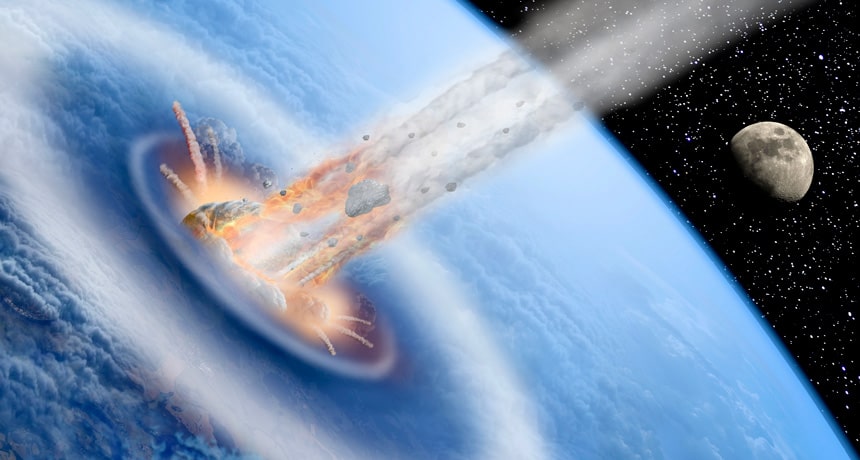
Although there’s a very small chance it could happen, a large asteroid impacting the Earth would be a worldwide catastrophe. Government scientists have developed a plan for such an eventuality — blow it up (or deflect its trajectory) with a nuclear weapon.
According to BuzzFeed News, a joint venture between NASA, the National Nuclear Security Administration, and weapons labs from the Energy Department has resulted in designs for a spacecraft capable of saving the planet. Dubbed HAMMER (Hypervelocity Asteroid Mitigation Mission for Emergency Response), the 8.8-ton craft would be able to alter the orbit of an incoming asteroid, either by crashing into a small one or detonating a nuclear device on a large one.
“Smart people are taking this seriously and thinking carefully about what might be done,” MIT impact expert Richard Binzel told the website. “These are reasonable ideas — well thought out.”
As outlined in the science journal Acta Astronautica, the more time we have to prepare for such an eventuality, the more likely the chance of success: “To use a kinetic impactor for successful deflection of an NEO [near-Earth object], it is essential to minimize the reaction time and maximize the time available for the impulse delivered to the NEO by the kinetic impactor to integrate forward in time to the eventual deflection of the NEO away from Earth impact.”
Scientists are using an asteroid named Bennu for a case study. According to calculations, there is a 1 in 2,700 chance it will strike the Earth in 2135 — on September 21, to be precise. Launched in 2016, the OSIRIS-REx spacecraft is currently on its way there. Later this year, it will scoop up a sample from the surface of Bennu in a “touch-and-go” maneuver before it returns to Earth.
Bennu is about one-third of a mile wide and weighs 174 billion pounds. If it struck the Earth, it would trigger a 1.13-gigaton blast, more than 20 times larger than the biggest hydrogen bomb ever tested. It was chosen for the impact scenario mainly because it’s been studied exhaustively as part of the OSIRIS-Rex mission.
“If the asteroid is small enough, and we detect it early enough, we can do it with the impactor,” physicist David Dearborn told BuzzFeed. “The impactor is not as flexible as the nuclear option when we really want to change the speed of the body in a hurry.”
It’s difficult to map the exact trajectory of these giant rocks hurtling through space, as they are subject to various gravitational forces and buffeted by solar winds. Strapping nuclear weapons to giant rockets and launching them on a collision course is hardly a sure thing, so the sooner scientists can identify possible threats, the better.
Detection of potentially dangerous NEOs needs to remain one of NASA’s priorities, said Bizel. “Time is the most important factor,” he added. “If you have more time, this problem gets much easier.”